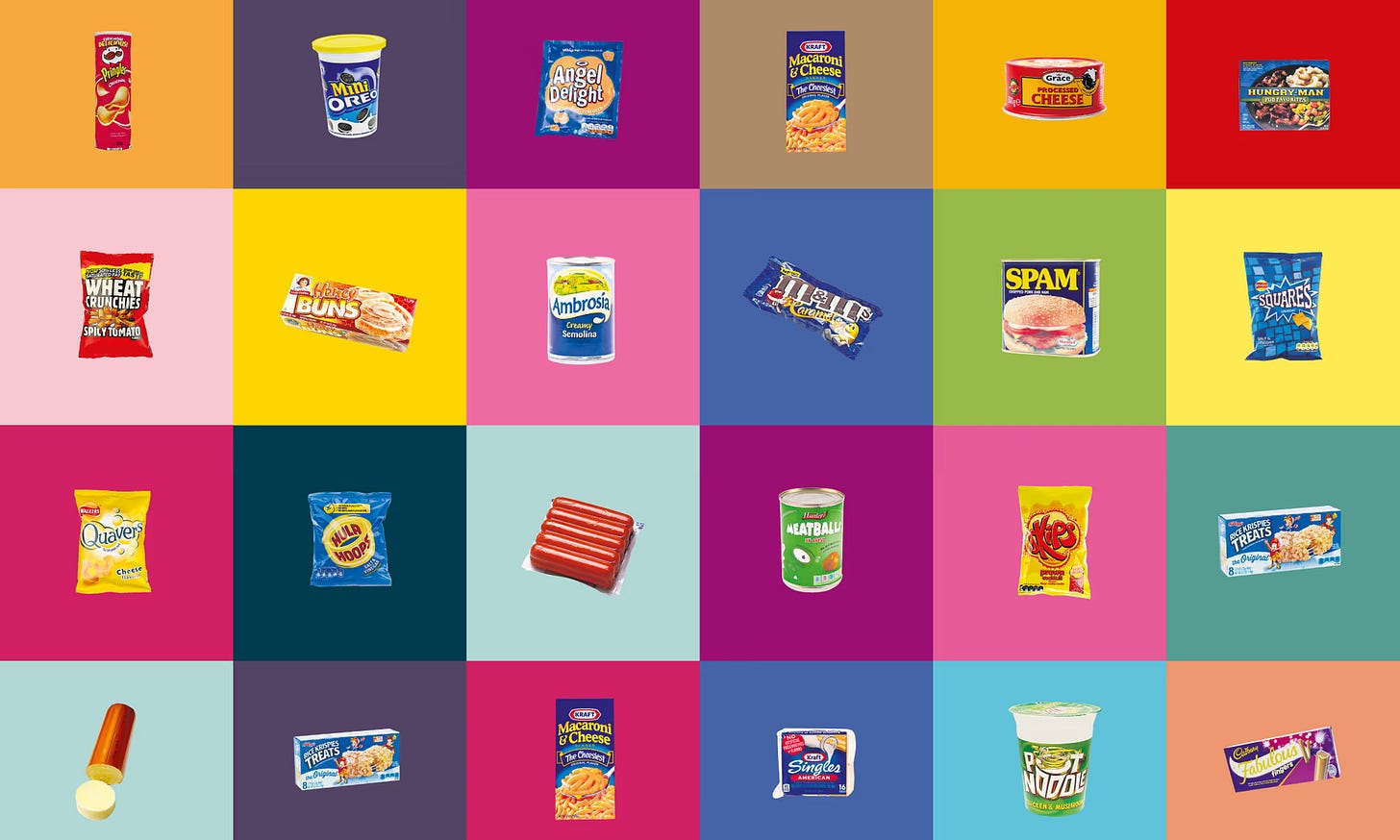Redefining food with NOVA
Decoding the NOVA system's role in our understanding of food and health
One of the greatest challenges in food and nutrition policy lies in establishing a shared consensus about what is actually best for our health. While many tout the mantra “Eat real food. Not too much. Mostly plants,” popularized by Michael Pollan, practical and realistic interpretation of this advice can be ambiguous. Defining “real food” itself can deteriorate into a perplexing exercise. And for those of us who cannot access this real food because of institutional and systemic racism, poverty, and disinvestment, the tension between what we should eat and what we actually can eat becomes even more stark.
The NOVA system attempts to make that blurred area a bit more clear. Developed in the late 2000s, it has started to gain popularity as a framework for categorizing food based on the level of processing it goes through. The system classifies food into four groups, ranging from unprocessed or minimally processed foods (like fresh produce, eggs, nuts, and seeds) to ultra-processed items (such as sugary beverages and prepackaged snacks).

What sets this system apart is its recognition that a balanced diet includes minimally processed foods (e.g. oils, salts, sugar), and even has room for processed foods like bread, cheese, and fermented or canned goods. However, it calls out ultra-processed foods — those requiring special equipment, additives, or alterations that enhance flavor and appeal that are impossible to recreate in a standard home kitchen — as those we should significantly reduce from our diet, or avoid altogether.
This approach may seem obvious to the average food- or health-conscious reader, but it’s a pretty revolutionary way of framing how and what we eat. NOVA doesn’t only defines ultra-processed foods by the amount of processing. This classification offers us a new avenue to study the impact of diet on health. Unlike studies that attempt to assess specific nutrients (which, by the way, we are notoriously terrible at tracking accurately), NOVA-based research has the potential to provide clearer insights into more general consumption patterns and their impact on our wellbeing.
While foods falling into NOVA categories 1-3 have deep cultural and historic roots, ultra-processed foods (category 4) are a relatively recent creation, thanks to the rise of industrialized food production. These foods typically lack the nutritional balance of foods in the other categories, and are engineered for overconsumption. However, these foods are also deeply entrenched in our daily lives, and in some cases are the only affordable source of nutrition that some people can access. This tension makes it worthwhile to reflect on the pros and cons of the NOVA system, while also considering how it may play a role in food as medicine.

Cons
The NOVA system is not a diet plan, but there are concerns that some might interpret it as such. "Clean eating" narratives on social media could coopt NOVA to shame individuals for their consumption, sidestepping important discussions we should be having about food access and corporate responsibility. The vagueness of NOVA has been deemed confusing and impractical for real world applications, and others argue that the research on the actual impact of ultra-processed food on our health is marginal at best.
Other critiques of NOVA argue that it unfairly criminalizes ultra-processed foods, which are an important part of our diet and provide convenience for many families. Interestingly, a good portion of this particular pushback has come from research funded by groups aligned with producing ultra-processed foods. (Marion Nestle has a great collection of pieces on this.)
Pros
What I appreciate about the NOVA system is its accommodation of culturally significant foods, avoiding automatic labeling of items as "unhealthy" due to fat or sugar content. A homemade cake or creamy piece of brie, for example, would fall under Group 3 of processed foods, of which the NOVA system supports moderate consumption. It allows for a wide breadth and depth of understanding what food might be “healthy” for us, especially when that definition is expanded to include things that bring us joy or have meaning. And because NOVA is not a diet, it doesn’t bar us from consuming ultra-processed foods, but rather offers a shift in awareness about how we consume them.

Moving Flexibly Forward
Do ultra-processed foods have a role in food as medicine? Medical nutrition therapy often makes use of ultra-processed nutrition shakes and other products that ensure patients can get the nutrients they need to survive, even if they are experiencing difficulty swallowing or loss of appetite. If we were to go by NOVA alone, would we write off these products as being detrimental to our health?
NOVA allows space for nuance, but it depends on how we, as policy makers and consumers, choose to interpret it. While there is an association between diets high in ultra-processed foods and poorer health,1 enacting a sweeping policy to restrict access and consumption could have disastrous unintended effects such as destroying public trust and making food access even more restricted. Despite the desire we may have to not put the onus on individuals to choose, we may have to do just that when it comes to ultra-processed foods, embedded as they are in our food system.
There has been some interesting advocacy however, encouraging appropriate labeling of ultra-processed foods so consumers can make more informed choices. In Mexico, for example, ultra-processed foods have special labels indicating that they are potentially high in fat, sodium, or sugar.

At its core, the NOVA system provides a framework for better understanding our food choices. And there is still plenty of work to be done. A recent study from Tufts found that ultra-processed foods in many cases make up more than 50% of the diets of children and teens, a large spike of which included ready to eat and ready to heat meals. Considering young people's exposure to food, particularly through school meals, which can comprise a significant portion of their diet, the NOVA system could help quantify exposure to ultra-processed foods and potentially help us find a bit more balance.
If food as medicine’s ultimate aim is to understand the connection between food and our health, there is likely some room for ultra-processed foods to play a part. But the NOVA system, at the very least, allows us to understand the prevalence of these foods in our lives. While we're still adapting to NOVA and seeking to understand it more deeply, I’m optimistic that it can lead us somewhere with a little more flexibility.
Reading
There are a ton of articles on this topic and more are emerging every day. I’m linking some of the other pieces I read as part of my research for this essay if you want to dig into this topic more deeply!
How ultra-processed food took over your shopping basket (The Guardian)
The UN Decade of Nutrition, the NOVA food classification and the trouble with ultra-processing (Journal of Public Health Nutrition)
Cooking
My partner and I took a cooking class a few weeks ago and learned how to make Pan con Tomate, which is my new favorite way to use up late season tomatoes.
Hall KD, Ayuketah A, Brychta R, et al. ~[Ultra-processed diets cause excess calorie intake and weight gain: an inpatient randomized controlled trial of ad libitum food intake](https://doi.org/10.1016/j.cmet.2019.05.008)~. *Cell Metab*. 2019;30(1):67-77.e3. doi:10.1016/j.cmet.2019.05.008




